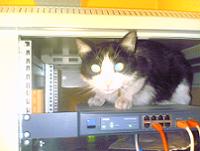| Pages in topic: [1 2] > |
Subscript and superscript in MemoQ Thread poster: Pavel Nikonorkin
|
|---|
Pavel Nikonorkin 
Russian Federation
Local time: 05:15
Member (2007)
English to Russian
When translating doc-files with MemoQ I need to make some text superscript or subscript.
Is there any way to make target text superscript or subscript if source text does not contain such formatting?
(TagEditor provides such a possibility with tag toolbar).
If it is impossible could it be implemented in future versions of MemoQ (like bold formatting)?
| | | |
| Insert new online tag | Aug 22, 2010 |
Pavel Nikonorkin wrote:
When translating doc-files with MemoQ I need to make some text superscript or subscript.
Is there any way to make target text superscript or subscript if source text does not contain such formatting?
(TagEditor provides such a possibility with tag toolbar).
Basically, menu, Format, Insert new online tag, then the comportment differs depending of the file format.
For some files e.g. HTML, you have a list including the super and sub tags, for INX, you should create your own list.
The tags should be paired, i.e. you should define both opening and closing pair.
In most cases you can also copy these inline tags from other segments.
Of course, you'll receive a warning you should acknowledge.
If it is impossible could it be implemented in future versions of MemoQ (like bold formatting)?
I think it should be improved.
Unlike the "linguistic" behaviour, sometimes the formatting may be fastidious.
Cheers
GG
| | | |
| I don't think it is possible! | Aug 22, 2010 |
Pavel Nikonorkin wrote:
When translating doc-files with MemoQ I need to make some text superscript or subscript.
Is there any way to make target text superscript or subscript if source text does not contain such formatting?
(TagEditor provides such a possibility with tag toolbar).
If it is impossible could it be implemented in future versions of MemoQ (like bold formatting)?
You do have bold formatting in MemoQ with DOC documents. Simply select the text to bold and choose the "B" icon in the toolbar, press Ctrl+B, or choose Format > Bold. Similar process with underline and Italics.
Maybe Kilgray's people correct me about this, but as for superscript and subscript for DOC files in MemoQ, I don't think it is possible. You might have to leave some special keyboard (starting and ending) in your translation in MemoQ and use Edit/Replace in MS Word with the exported document to find and format the bits. If they are many, you can use Word's format replacement options to do that in a few steps.
| | | |
| Can you explain why? | Aug 22, 2010 |
Pavel Nikonorkin wrote:
When translating doc-files with MemoQ I need to make some text superscript or subscript.
I am just curious. Can you tell us why do you have to make the text superscript or subscript when it was not in that format in the source language? Is it something linked to the spelling or grammar of your mother tongue?
| | |
|
|
|
Pavel Nikonorkin 
Russian Federation
Local time: 05:15
Member (2007)
English to Russian
TOPIC STARTER | There are several cases | Aug 22, 2010 |
Tomás Cano Binder, CT wrote:
Can you tell us why do you have to make the text superscript or subscript when it was not in that format in the source language? Is it something linked to the spelling or grammar of your mother tongue?
1. Poorly formatted doc-file generated from PDF (e.g. m2). Some texts contain lots of terms (Cmax, Tmax) which should be used in subscript.
2. Сubic centimeter (сс) > cm3. I can not use "cc" in Russian and should replace it with "cm3"
It is possible to make all formatting in MS Word but it is not handy at all. If it is possible in TagEditor why it is impossible to implement in MemoQ.
[Edited at 2010-08-22 19:04 GMT]
| | | |
| Translate a TTX in MemoQ | Aug 22, 2010 |
Pavel Nikonorkin wrote:
It is possible to make all formatting in MS Word but it is not handy at all. If it is possible in TagEditor why it is impossible to implement in MemoQ.
Because MemoQ will not open Word DOCs as a tagged document as it happens in TagEditor. In TagEditor, all formats (font, size, bold, Italics...) are seen as tags, so you can in theory fiddle around with the tags as in your case. MemoQ simplifies your view of a Word document by hiding the font tags from you and using visual mode for the simple tags (bold, Italics, underline), thus reducing the number of tags you must work around in your translation.
Now, if this is really critical I suggest that you open your DOCs in TagEditor, save them as TTX, presegment them with Trados and then translate them in MemoQ. This way you will still see a ton of tags as in TagEditor, but at least you will benefit from MemoQ's advantages overall.
I insist in saying that maybe I am giving you an incorrect solution here. What you require could be possible in MemoQ, but I don't know how you could do it.
| | | |
Pavel Nikonorkin 
Russian Federation
Local time: 05:15
Member (2007)
English to Russian
TOPIC STARTER | It is not really crucial and just the matter of usability | Aug 22, 2010 |
Tomás Cano Binder, CT wrote:
This way you will still see a ton of tags as in TagEditor, but at least you will benefit from MemoQ's advantages overall.
No, thank you! I do not want to see tons of tags. I like working in MemoQ but it needs some improvement as any software. I like working in MemoQ but it needs some improvement as any software.
[Edited at 2010-08-22 19:08 GMT]
| | | |
| Sorry for a mistake... but basically, I was right :) | Aug 23, 2010 |
Pavel Nikonorkin wrote: Tomás Cano Binder, CT wrote:
This way you will still see a ton of tags as in TagEditor, but at least you will benefit from MemoQ's advantages overall. No, thank you! I do not want to see tons of tags.  I like working in MemoQ but it needs some improvement as any software.
Sorry, yesterday, I read your post too fast, I didn't realize it's related to DOC.
If you use the default RTF/DOC format, it's impossible.
If you import the file as DOCX, you have tags and you can tweak MQ a little bit.
As the subscript/superscript are not represented directly, you can use rpr tags, if already used in the document.
Although you can use the Insert new inline tag feature as above, the easiest way is to copy the tags corresponding to subscript/superscript from another segment.
If you have no subscript/superscript in your text, you can always add a fake sentence like "H20 X2." with proper subscript/superscript tags at the end and reuse 'em.
I agree, it should be improved 
Cheers
GG
| | |
|
|
|
| Need to include superscript too | Nov 26, 2010 |
I have come to need this now and it seems it's still impossible? (I use 4.2 and the file is a PDF) ...
| | | |
Pzit (X)
English to Italian
| Same need here! | Jan 8, 2011 |
I have the same need here: my current work is on a scruffy source doc full of H2O, CO2, H2N etc. While I can replace the formatting in Word once translation is finished, it would definitely be handier if I could populate my TMs with the proper superscript/subscript text. A dedicated command next to the existing ones for Bold, Italics and Underline would be much appreciated!
| | | |
| Use your keyboard | Jan 10, 2011 |
Stefano Armanini wrote:
I have the same need here: my current work is on a scruffy source doc full of H2O, CO2, H2N etc. While I can replace the formatting in Word once translation is finished, it would definitely be handier if I could populate my TMs with the proper superscript/subscript text. A dedicated command next to the existing ones for Bold, Italics and Underline would be much appreciated!
Hi,
Try this:
m2 = m+Strg+Alt+2
cm3 = cm+Strg+Alt+3
| | | |
| Is it possible now? | Nov 15, 2011 |
I badly miss this too when I work in MemoQ, is it possible now with the new version?
I have 5.0.54.
(I need it all the time in French for things like "1er", "XXe siècle", "no", "Dr", "Cie" etc.)
| | |
|
|
|
TvNellen (X)
United States
Local time: 21:15
English to Dutch
+ ...
Translation-Pro wrote:
Hi,
Try this:
m2 = m+Strg+Alt+2
cm3 = cm+Strg+Alt+3
That works! For those who don't use a German keyboard it might be useful to add that Strg is Ctrl.
| | | |
Yuki Okada 
Canada
Local time: 19:15
Member (2007)
English to Japanese
+ ...
| Use Insert symbol | May 22, 2013 |
If it is superscripting 2 or 3, then you can use Insert symbol.
Edit -> Insert symbol
Scroll down to find 2 or 3, and then Insert.
| | | |
Maarten Fortuin 
Netherlands
Local time: 04:15
Member (2010)
German to Dutch
+ ...
| Failed workaround | Jul 10, 2013 |
Previous comments were mainly on memoQ 5.
I'm working in memoQ 6 and was pretty surprised that it's still not possible. So I tried a workaround.
In this case, I need superscript simply for the much used Dutch ordinal "e" (1e, 2e, etc.). Although I don't have a lot of these in the text, I was just curious if it would be possible.
However, the workaround proved not be practicable.
I simply typed "2e" in a new Word document. Word automatically changed ... See more Previous comments were mainly on memoQ 5.
I'm working in memoQ 6 and was pretty surprised that it's still not possible. So I tried a workaround.
In this case, I need superscript simply for the much used Dutch ordinal "e" (1e, 2e, etc.). Although I don't have a lot of these in the text, I was just curious if it would be possible.
However, the workaround proved not be practicable.
I simply typed "2e" in a new Word document. Word automatically changed the "e" to superscript. Then I imported the Word doc into memoQ, in order to copy-paste the inline tags into the translation I'm currently working on.
(First I made the mistake of importing docx, while the translation I'm working on is doc. The inline tags for superscript that memoQ applies for the two different formats, are not interchangeable.)
The copy-pasting went well and that would have been the end of that, if it hadn't been for memoQ's strict adherence to QA. The translation could not be exported because there were too many tags in the target segment(s) concerned.
Unfortunately, the QA message could not be ignored, so exporting the translation was impossible.
I'm a great fan of memoQ because of it's versatility, but something as basic as this should have been resolved ages ago! ▲ Collapse
| | | |
| Pages in topic: [1 2] > |























